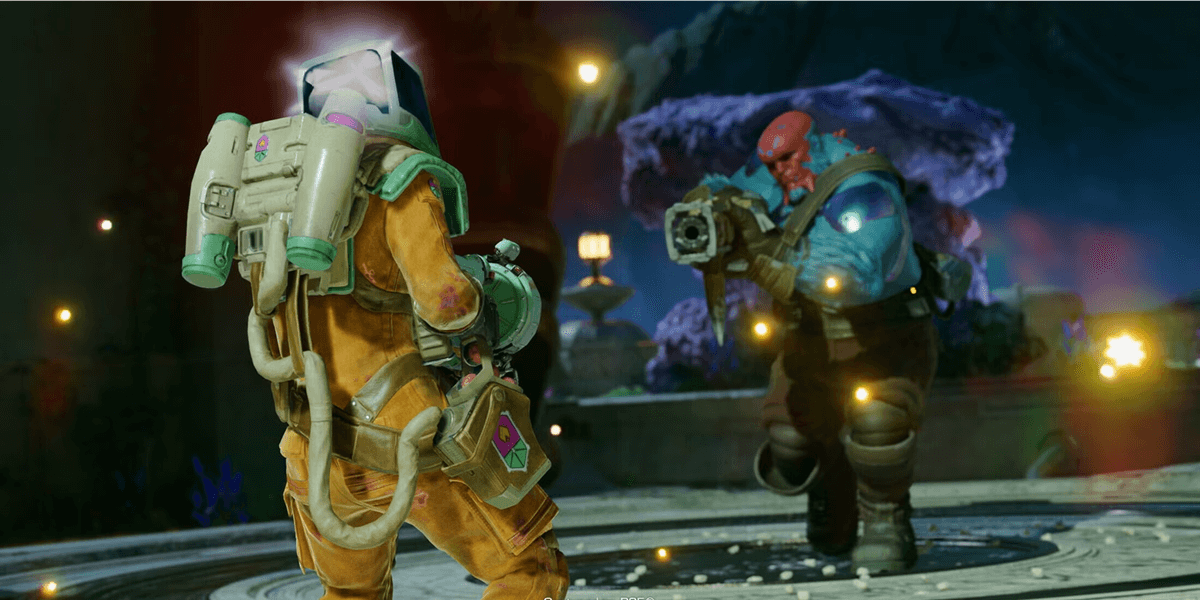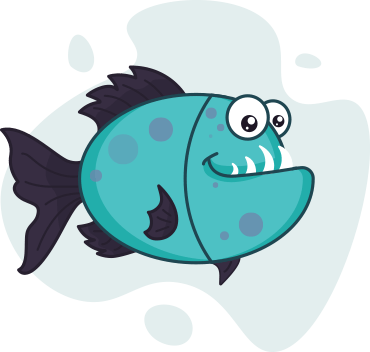Concord Character Designs: A Complete Guide to Visual Development
Illustrate Now
Character design is a cornerstone of any successful game, and in Concord, it plays a pivotal role in shaping the player’s emotional experience and connection to the game world. From the heroic protagonists to the complex antagonists, the design of each character is carefully crafted to convey personality, lore, and gameplay mechanics. In this comprehensive guide, we will walk you through the Concord character design process, exploring the creative journey from initial concepts to final in-game models, and the challenges and solutions that define the game’s unique visual identity.
Table of Contents
Toggle1. The Importance of Concord Character Design
Character design is more than just creating appealing visual aesthetics; it’s about telling a story. In Concord, characters are not only the faces of the game but also vehicles for storytelling and emotional engagement. Their designs reflect their personalities, backstories, and relationships to the world around them. Whether it’s through their armor, clothing, or facial expressions, every detail is intentional and meaningful.
For instance, Kaelen, a central warrior character, embodies the balance between strength and vulnerability. His design integrates angular armor and flowing robes to represent both his martial prowess and his spiritual journey. The design of characters like Kaelen helps build connections with players and deepen their immersion in the Concord universe.
2. Defining the Vision: Understanding the Game’s Themes and Goals
The foundation of any great character design lies in a deep understanding of the game’s themes. Concord is set in a sprawling, dystopian future where players must navigate political intrigue, vast landscapes, and constant warfare. Each character must reflect the tone of the game—ruthless warriors, idealistic rebels, and morally grey figures are all a part of Concord’s intricate narrative.
For instance, Elara, a rogue character, is designed with a stealthy, minimalist aesthetic to align with her agile, quick-strike gameplay. Her muted color palette and angular body language emphasize her elusive nature, while her armor—lightweight yet functional—hints at her practical survivalist background.
3. The Design Process: From Concept Art to Final Model
3.1. Initial Research and Inspiration
Every character design starts with research. Designers at Concord dive deep into historical illustrations, cultural studies, and conceptual art to craft the perfect visual for each character. For Kaelen, inspiration was drawn from ancient warriors, integrating motifs from both Western and Eastern cultures to create a balanced and timeless look. Research also extends to environmental storytelling, ensuring that each character’s design fits within the game’s diverse world.
For Elara, inspiration came from sleek modern fashion and stealth technology, blending them into a design that reflects both her personal history and gameplay function.
3.2. Concept Art
Once the research phase is complete, Concord’s concept artists start sketching the first iterations of each character. These concepts focus on exploring silhouette, expression, and personality. For instance, the initial sketches of Kaelen featured a more traditional knightly look, but after several revisions, illustration designers opted for a sleeker, more angular armor that reflected his internal conflict.
The concept phase is not just about visual style; it also involves figuring out how the character will fit into Concord’s world. Elara’s design, for example, was adjusted to ensure that her gear would allow her to seamlessly blend into both urban and wilderness environments—important for her role as a scout and infiltrator.
3.3. Iteration and Feedback
The concept phase doesn’t end after the first set of designs. Iteration is critical. For Concord, character designs often go through 3-5 major revisions before reaching the final stage. These revisions are driven by feedback from gameplay programmers, narrative designers, and visual artists, each of whom brings a different perspective to the design. Feedback from early playtests also informs the changes—such as the realization that Elara’s silhouette wasn’t distinct enough in crowded combat environments, leading to more pronounced details on her gear.
4. Designing for Gameplay: Integrating Function with Form
Character designs in Concord are created not only to be visually striking but also to function seamlessly in gameplay. Whether it’s a towering warrior or a nimble scout, each character must be designed with mechanics in mind.
Silhouette Design
A key aspect of character design in Concord is creating clear silhouettes that help characters stand out in diverse environments. For example, Kaelen’s broad, angular armor gives him a larger-than-life presence, while Elara’s streamlined form ensures that she moves quickly and blends into the background when needed.
Designing for Animation
Character designs must also account for movement. Concord’s designers work closely with animators to ensure characters feel natural during gameplay. Kaelen’s heavy armor required special attention to his movement, with animators adding weight and slow, deliberate movements to emphasize his strength. Conversely, Elara’s design was tailored for fluid, fast-paced animations, with smaller, lighter pieces of armor that allow for quick shifts in position and seamless animations.
5. The Art of Color, Textures, and Materials
Color and texture play a vital role in conveying character identity. Concord uses vibrant color schemes for many of its protagonists to signal optimism, even in a harsh world. For example, Kaelen is dressed in a striking combination of crimson and gold to symbolize his noble roots and the blood he sheds in battle. The textures on his armor evoke a worn-in quality, reflecting his years of experience and battle scars.
Elara, on the other hand, uses muted colors, primarily greys and blacks, to reflect her stealthy, pragmatic nature. The high-tech, sleek textures on her armor reflect the advanced tech of Concord’s world, emphasizing her role as a skilled infiltrator.
6. Character Design and Diversity: Representation in Concord
At Concord, inclusivity is central to the design philosophy. The team is committed to ensuring diverse representation in character design, which not only appeals to a broader player base but also enriches the narrative. Kaelen, for example, was designed with influences from various global cultures to avoid a stereotypical portrayal of a knight. Similarly, Elara’s design integrates elements from different Asian and European cultures, creating a hybrid aesthetic that reflects her multicultural background.
7. Collaboration Across Teams: Working with Developers and Animators
Character designers at Concord don’t work in isolation. The team collaborates closely with gameplay programmers, VFX artists, and sound designers to ensure that the visual design integrates with the technical aspects of the game. For instance, the design of Elara’s armor had to be optimized for both aesthetic appeal and functionality in-game. Programmers helped adjust the design for performance, while VFX artists ensured that her visual effects—such as energy shields and stealth abilities—complemented her look.
8. Finalizing Character Designs: Polishing and Refining
Once the concept art is locked down and feedback has been incorporated, the character enters the final stage of development. This includes refining textures, ensuring lighting is accurate, and adjusting models for in-game performance. For Concord, this stage also includes rigorous playtesting, where designers can tweak the visual design based on player feedback.
In early playtests, it was noted that Kaelen’s armor design made it difficult to read his silhouette in some combat scenarios. As a result, armor details were tweaked to ensure his movements remained readable, especially in intense battle scenes.
9. Character Design Evolution: Post-Launch Updates
Character design doesn’t end at launch. Concord’s design philosophy includes flexibility for post-launch updates. Characters may evolve based on player feedback, narrative updates, or live events. For example, Elara’s design was updated in a post-launch patch to incorporate new tech she acquires during the game’s evolving storyline. This approach allows the team to maintain fresh, relevant character designs even after the game’s release.
10. The Impact of Character Design on Player Engagement
Character design plays a critical role in player engagement. Well-crafted characters are not just visually memorable; they become emotional anchors for players. Kaelen’s imposing presence and noble demeanor evoke feelings of respect, while Elara’s agility and mystery create a sense of connection. Through careful design, these characters drive players to emotionally invest in their stories, making every moment in Concord feel meaningful.
Conclusion
The journey of creating Concord’s character designs is a multi-faceted process that blends creativity, technical skill, and collaboration. Every character—from the design of their silhouette to the materials of their armor—is carefully crafted to enrich the player experience and bring the Concord universe to life. Next time you play Concord, observe how each character’s posture, expression, and visual elements work together to tell their story. Every design choice, from color to texture to silhouette, has been made with care to enhance your gaming experience.
FAQs
1. What is character design in Concord?
Character design in Concord involves creating unique visual identities for characters, combining narrative elements, gameplay mechanics, and aesthetics to enhance emotional engagement and storytelling within the game world.
2. How do character designers create Concord’s heroes and villains?
Character designers in Concord focus on personality, backstory, and gameplay needs, integrating cultural influences, color schemes, and silhouettes to craft visually distinct heroes and villains that fit the game’s narrative.
3. What tools are used in Concord’s character design?
Concord’s character design process uses industry-standard tools like ZBrush, Substance Painter, Maya, and Unreal Engine, helping artists sculpt detailed models, texture them, and integrate them seamlessly into the game.
4. How does playtesting affect character design in Concord?
Playtesting helps refine character designs by providing feedback on readability, silhouette clarity, and functionality, ensuring each character performs well in gameplay and resonates with players emotionally and visually.
5. How do character designs align with Concord’s world-building?
Each character’s design in Concord is carefully crafted to reflect their faction, backstory, and environment, ensuring they feel integrated into the game world and contribute to the overarching narrative.







